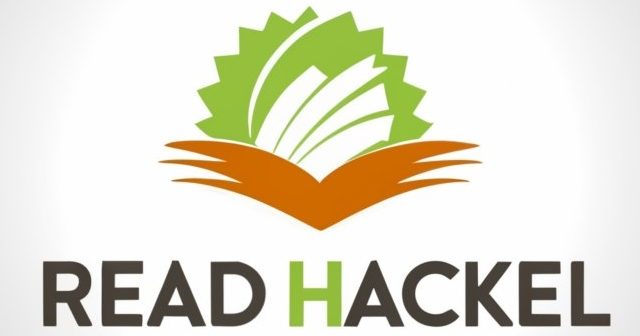Like how our lunch menu is incomplete without a dessert in the end, our essays are also incomplete without a proper conclusion. This is a vital stage of any essay as it can make or break your essay. It holds the power to leave an everlasting effect on the reader’s mind.
We all know how tormenting it is when there is a breakup without closure. Now imagine how frustrating it is for readers to read the whole essay just to find there is not a proper closure and completion to the argument. Knowing how to write an engaging, thorough conclusion is the key to making your essay look more impactful. A good conclusion will wrap up your main points and thoughts that combine all important information with an emotional appeal that resonates with readers.
In this blog post, I am going to discuss all points on how to write an impressive essay conclusion.
- 1. Restate the thesis
An effective essay conclusion can bring readers to the main point of the essay, thus reminding them about the true purpose of the essay. But make sure that you avoid repeating the thesis verbatim. I will recommend you slightly paraphrase your arguments and ensure the primary point of the essay is preserved.
- Review your main points
Along with revisiting your thesis statement, you must also review the main points you have addressed in your essay to support your arguments. It should not be just a summary; instead, you must examine all the main points and demonstrate how each point is connected. It’s best to discuss all your points concisely in a few sentences, and this will prepare you to demonstrate on all of the points fits the bigger picture of the essay topic. This is your final chance to show how all of your paragraphs add up to a coherent whole.
- Provide necessary insights
When the reader reaches the concluding paragraph of your essay, they expect to see a proper solution to the problem you have addressed. Make sure to add solutions like questions, insight for further study, or a call to action.
So by the time you conclude, if you are not sure what to include in it, try asking yourself the following questions:
- Who should anyone care about the problem I am discussing?
- What are the implications of your argument?
- Why would the readers care?
Your conclusion should answer all of these questions just to leave your audience with something to wonder or think about.
- Add a perspective
You are working on a research proposal help and have come across a great quote you could not add to your essay. The conclusion can be the best place to add it. Adding a quote from primary or secondary sources helps you frame your final thoughts or thesis in a different light. This may add texture and specificity to your overall argument.
- Keep it short
As the reader reaches the end of the essay, they can sense that it is time to wrap up, and thus they are prepared for an ending to come. After reading a long essay, readers do not have the patience to read a lengthy conclusion. So avoid beating around the bush as they want to see the solution or the result immediately. Make sure it is short and should not have any new information. Ideally, the concluding paragraph should not be more than 3-5 sentences.
- Appeal to the emotions of readers
Use sensory or emotional language if you want to leave a powerful and lasting impact on the mind of readers. Emotional appeals are an excellent way to reinforce your central points.
- Be real
The conclusion is the ideal place for you to relate with your readers on a personal level. This goes especially when writing an exhaustively detailed or complicated technical essay. Creating a few personal comments can help you breathe at the end. When you leave your personal story on how you have dealt with an issue, readers will be able to connect and relate to your issue.
- Avoid adding any images
When I am writing an essay, I love adding images related to the content as it gives a certain appeal to the essay structure. It makes it look more engaging. But the minute I come to the concluding paragraph, I tend to stop because adding images in the concluding paragraph makes it look unnecessarily lengthy. There is no need to make it look longer than it needs to be.
- 9. Ask a question
Questions demand responses, and it is bound to get the minds of people moving. That is why I love adding a question at my essays’ end. When I am writing an essay, I expect to change the reader’s behavior in a certain way, and I have found adding questions is an effective way to do so. It sparks curiosity, making them think about the essay even after completely reading it. I demand to stay on the reader’s mind longer, and I happen to do so. Go through these examples if you are unsure how to conclude with a question.
- Model your conclusion based on the introduction
Although the concluding paragraph differs from the introduction, they still share certain common features. For instance, you will end your introductory paragraph with a thesis statement and start the concluding paragraph by revisiting the thesis. Your conclusion may also refer to the information or ideas you have included in your essay.
- Avoid being speculative
A conclusion is a place where you can afford to bend the rules a little. Be careful throughout the essay not to make assertions that you cannot back up. Your concluding paragraph is expected to gesture broadly and even slightly speculatively. Don’t go overboard by saying your argument will change the world. You will never be able to convince your argument readers like that. Your essay will come across as overblown and ludicrous. You should aim to excite your readers
- Be consistent in tone and style
Do not change the tone and style of your essay in the conclusion. If you have maintained a serious tone throughout your essay paragraph, do not end up adding humor to the concluding paragraph. This will throw off the audience. Thus it is always best to stay consistent in style, tone, and word choice in the introduction, body, and conclusion of an essay.
- Avoid using conclusion words and phrases
When you are using conclusion words and phrases, it only appears as an attempt to increase the word count. Besides, your readers already know what you are doing, so there is no need to add that. Some of the words and phrases that you should avoid using:
- “To conclude”
- “In short”
- “This essay argued”
- “To sum up”
- “In conclusion”
Just like in any other essay paragraph, the conclusion paragraph should also be stated with a topic sentence that carries on the preceding ideas in a paragraph.
- Edit and proofread
No matter how perfectly you might think you have written your essay, make sure to be very careful about the inconsistencies
Make sure to question the following questions before submitting your essay:
- Did I include at least three of the four elements of the conclusion?
- Did I use accurate academic language? Do I hedge appropriately?
- Is the concluding paragraph of my essay need to be more concise? Are there any phrases or sentences that need to be rewritten?
- Does my conclusion move from specific to general?
- Could there be any grammatical or spelling errors in my essay conclusion?
You should edit and proofread your essay thoroughly to ensure there is no room for error. Do not let any pesky errors ruin the quality of your essay.
FINAL THOUGHTS
The conclusion is the final chapter of your essay, so ensure you provide a proper answer and give a complete closure to the readers before closing the curtain. You must leave your readers with a strong impression of the essay topic. It should not be just a repeat of your introduction or a summary of the body paragraphs.
AUTHOR BIO: Julia Stevenson has completed MA in English Literature from one of the [restigious universities in the USA. She is also associated with Allessaywriter.com, where she offers English essay writing help solutions. She can also guide you by giving you tips on how to create a perfect outline, an essay conclusion, or an essay introduction.

